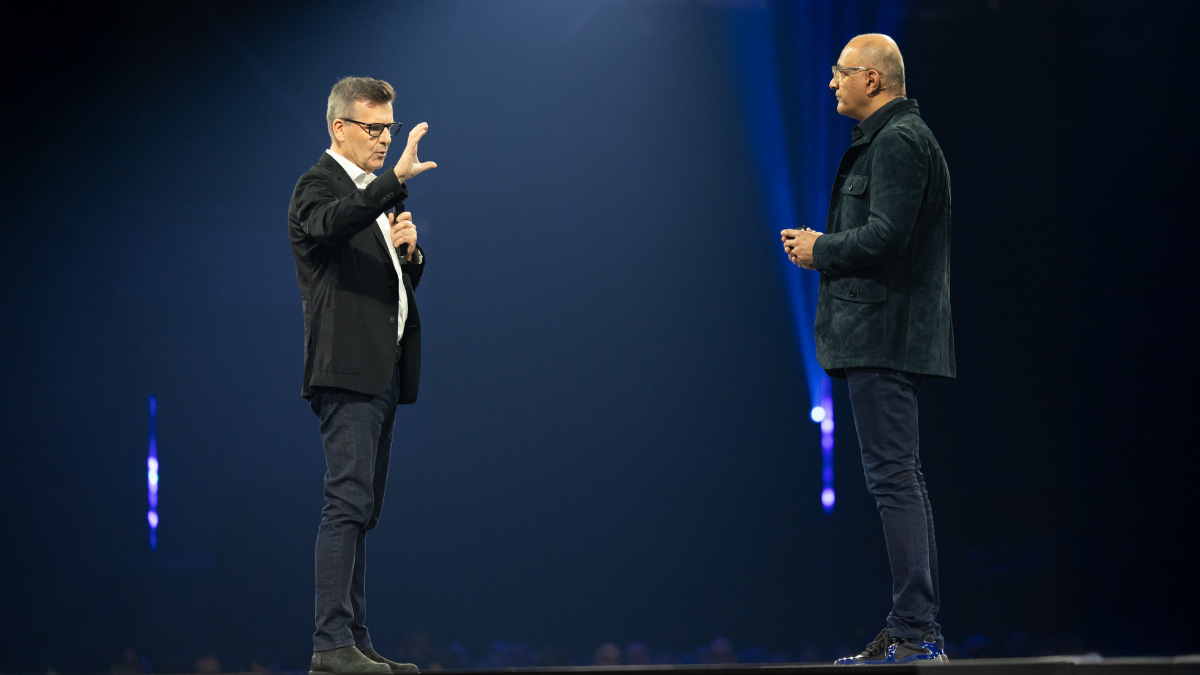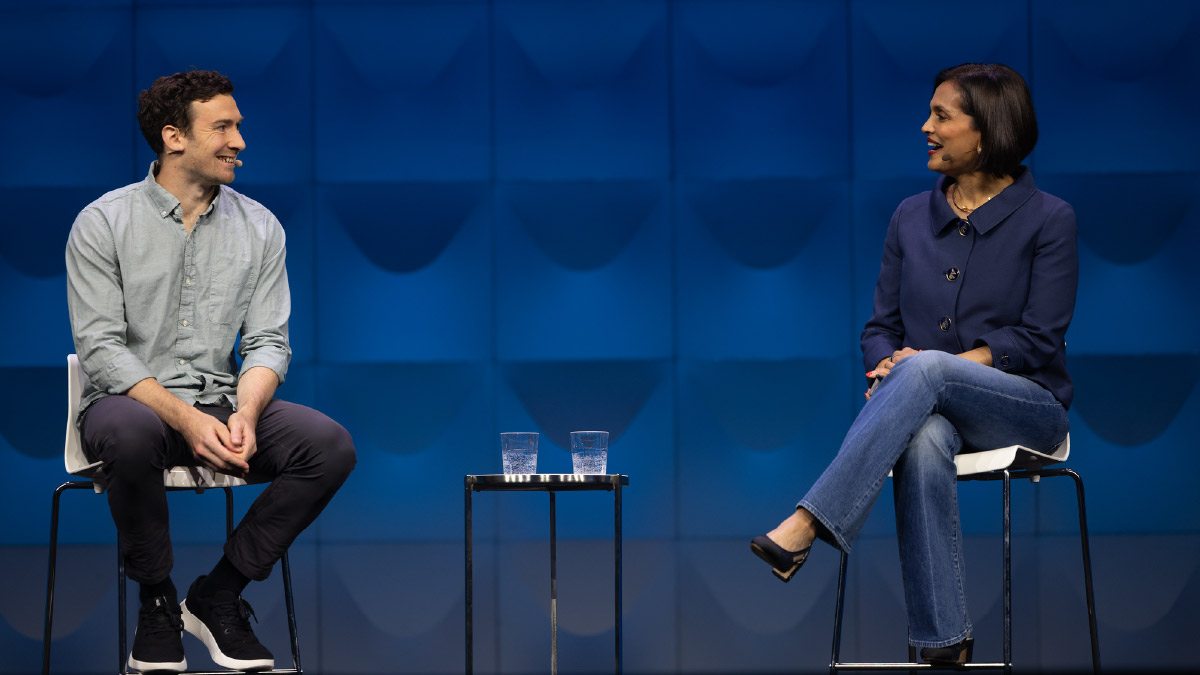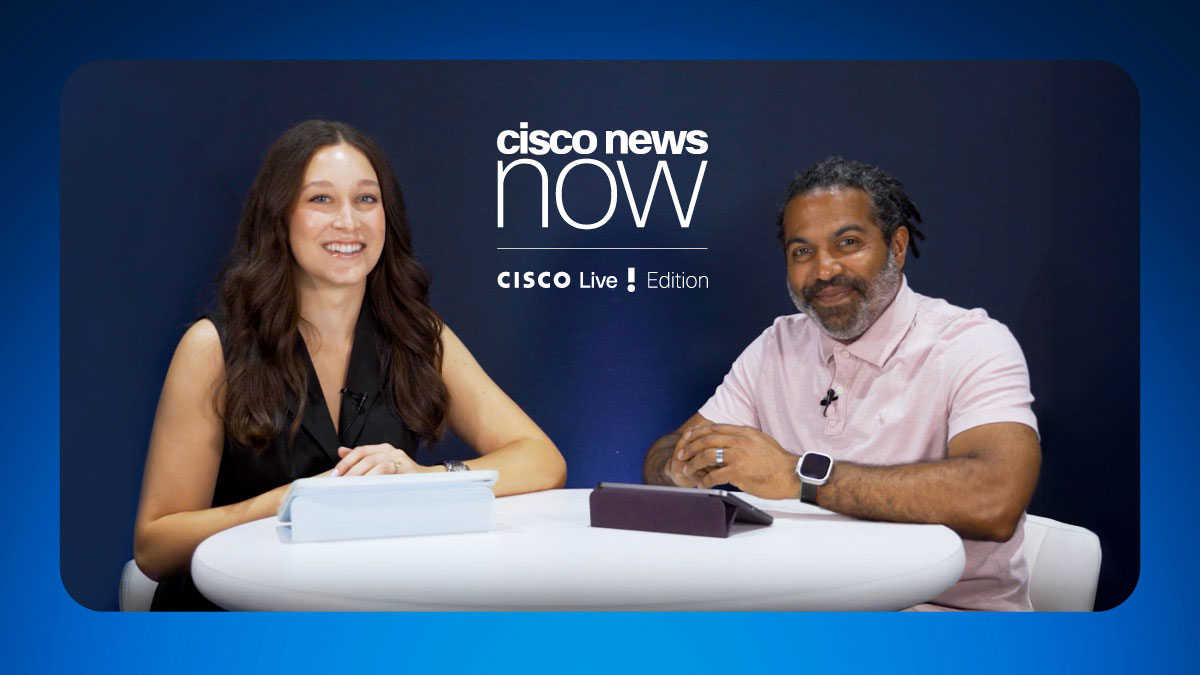From AI to mounting security threats, BT faces the same challenges as other service providers.
But BT is leaning into them with confidence.
Contributing to that confidence is a 35-year partnership with Cisco. Most recently, Cisco has supported a major workplace transformation; engaged in an ongoing, brand-new global network build; and welcomed BT’s continuing role as a Cisco alpha-tester, contributing to the development of critical solutions like Cisco HyperShield, Nexus HyperFabric AI, and AI Defense.
Prior to his appearance on the stage at Cisco Live Amsterdam this month, we spoke with Colin Bannon, chief technology officer for BT Business, about BT’s forward-looking partnership with Cisco — a relationship built on trust, operational excellence, and innovation.
Thank you, Colin! Let’s start with a quick overview of BT Group. As CTO, what is the scope of employees and customers that you are serving?
Thanks for having me! BT Group serves customers in over 180 countries. So, we have a truly global footprint. In the UK alone, 30 million consumers and businesses use our services, and there's more than 200 million devices connected to our networks. In 2023, there were about 100 petabytes consumed on our network, and we have about 19,500 mobile sites. The record peak throughput of our network is about 35 terabits per second. So, it's pretty big.
It may be big, but BT is constantly evolving and innovating. Let’s start with your workforce. What led BT towards transforming the employee experience?
Before the pandemic, we set out to completely transform our offices into places where people want to work and be proud to bring customers. So, we asked Cisco to help us build, learn and grow. Along the way, we’ve tried new things and are applying that learning to the workplace solutions we provide to our customers. We’ve reduced an estate of 900 buildings at about 440 locations into 77 buildings at 30 different locations. And we’ve unleashed the power of data to create super-cool experiences for our employees and customers.
This program has gone so well, we’re now extending it into international offices, including our India hub, and to other BT Group locations across the UK.
How did Cisco help?
The technology is powered by Cisco. For example, every day in our buildings we have about 800,000 Wi-Fi on-boardings, every single one of them is monitored by Cisco Catalyst. And by monitoring that Wi-Fi and other data sources like Cisco Spaces, we can make real-time decisions. That includes saving power and reducing our Scope 3 emissions.
As a telco, we are huge consumers of energy, and we’re very serious about doing our bit to reduce that. For example, exiting older buildings with high energy demand, as well as other improvements have saved a total of approximately 8GWh of electricity and 15 GWh of gas — the equivalent of around 7000 ton of CO2.
There’s a lot of critical data riding on your networks, so resilience and security must be critical.
Yes, having visibility in the network and data-loss protections are so important. We need to be super resilient. All of BT Group’s customers are important and each of them relies on our rock-solid networks.
We support critical services across the UK, from logistics to aviation, banking to health, and of course, the “blue light” emergency services such as police, fire, and ambulance.
Cisco technology underpins the BT critical infrastructure used to support those pillars of the economy as well as life-and-death services. If you call 999 for help — the UK equivalent of 911 — it’s my BT colleagues who answer the call. They communicate with you, each other, and the emergency services via networks powered by Cisco. You could say Cisco is the critical infrastructure supporting our critical infrastructure.
AI is placing new pressures on telecoms, but you seem excited about the possibilities it presents.
AI hasn't really been launched; it’s more like it's escaped out into networks. And all of us really need to be doubling down on AI-ready networks. As our customers evolve, things like Cisco Hyper Shield, Hyber Fabric, and AI Defense are super important. Shadow AI is so hot now that some company advisory boards are thinking about banning BYOD. Can you imagine? Because they can't control the data loss of people installing things like transcription apps on their phones. But companies really need to lean into this rather than be draconian. To do that, they need to trust the tools that will allow them to hold off some really significant privacy and data concerns. This explosion of people wanting to take advantage of the brilliance of AI is not going to slow. And the network is a huge part of the solution.
How is Cisco helping on the AI front?
The release of AI Defense came at a perfect time. It’s absolutely needed against the backdrop of an ever-evolving threat landscape. And of course, Hyper Shield as well. We are big believers in the One Cisco approach. Cisco networking and security are converging. That more holistic approach is far better than the bag-of-bits approach, especially as the pace quickens.
BT is in the midst of a major network overhaul. That must build confidence in meeting challenges around AI and security.
There is no Plan B without the network — it’s so important. That’s why we are alpha testers on some Cisco products. And we were one of the foundational partners of HyperFabric.
We've taken the principles of a data center-fabric and extended it to our wide-area service provider underlay. We’ve created a fundamental reimagining of what a global network fabric looks like for the underlay. Powered by Cisco hardware, it addresses future challenges of fully digitalized cloud connectivity with AI, programmability, security, regulation, and unmatched resilience.
We’re calling it Global Fabric. It's really important for us to have that super-clear visibility and control, spanning every hop of the journey that workloads take. And our new network uses 79 percent less electricity than the networks it replaces.
It sounds like the BT-Cisco partnership is a lock for the future.
BT Group’s relationship with Cisco gives us resilience and operational trust, but it’s also flexible and insightful. That's why it's brilliant to have Cisco as a partner.





